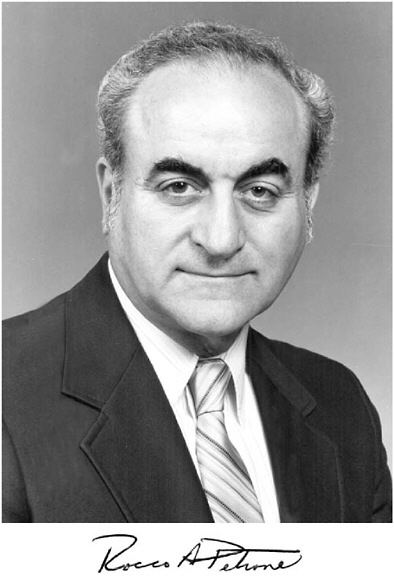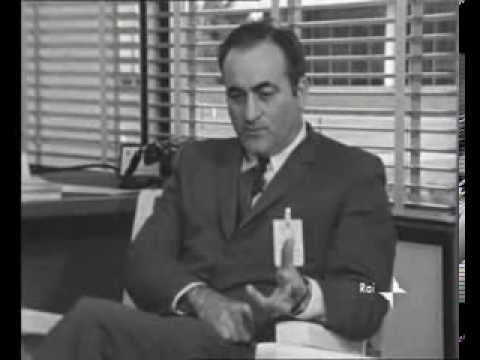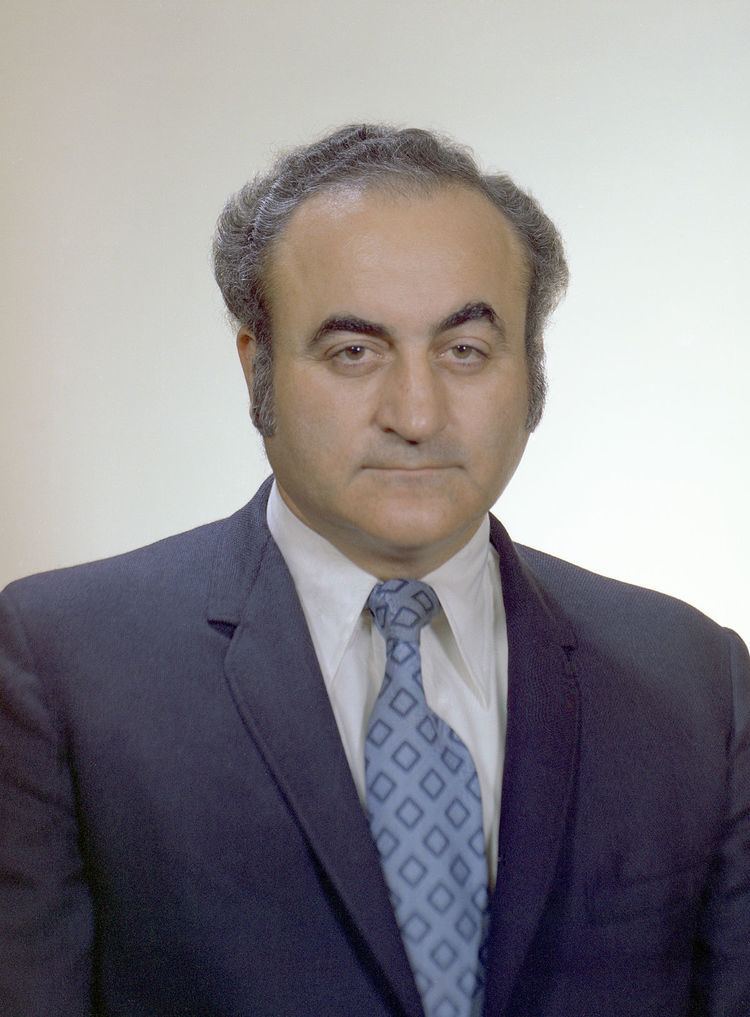Nationality American Children 4 | Name Rocco Petrone Role American football player | |
 | ||
Born March 31, 1926 ( 1926-03-31 ) Amsterdam, New York Occupation Director of theMarshall Space Flight Center Spouse Ruth Petrone (m. 1955–2006) | ||
Rocco Anthony Petrone (March 31, 1926 – August 24, 2006) was an American mechanical engineer of Italian ethnicity and U.S. Army officer who was the third director of the NASA's Marshall Space Flight Center, from 1973 to 1974. Petrone previously served as director of launch operations at NASA's Kennedy Space Center (KSC) from July 1966 until September 1969, and then as Apollo program director at NASA Headquarters.
Contents
- Lucani famosi rocco petrone il lucano che mando l uomo sulla luna
- Early life
- NASA career
- After NASA
- References

Lucani famosi rocco petrone il lucano che mando l uomo sulla luna
Early life

The son of Italian immigrants, Anthony and Theresa (née DeLuca) Petrone, emigrated from Sasso di Castalda, Petrone was raised Roman Catholic and attended the United States Military Academy at West Point. There he played defensive tackle in the 1945 national football championship winning team. Graduating with a Bachelor of Science degree in 1946, he served in West Germany from 1947 to 1950.

He also earned a master's degree in mechanical engineering from the Massachusetts Institute of Technology in 1951 and received an honorary doctorate from Rollins College. During two decades with the U.S. Army, Petrone took part in developing the Redstone rocket, the first U.S. ballistic missile and the vehicle used to launch America's first astronauts, Alan Shepard and Gus Grissom on their suborbital missions. He retired from the army in 1966 with the rank of lieutenant colonel.
NASA career
In 1960, Petrone was transferred to NASA. There, Petrone presided over the development of the Saturn V launch vehicle and launch operations, what he dubbed the "five-month marathons," leading up to each launch. He oversaw construction of all the launch elements of the Apollo program, including Launch Complex 39, the Vertical Assembly Building and the Crawler-Transporter, all of which were modified for Space Shuttle operations. He retired from the army in 1966 but continued at work at NASA sites, being promoted to director of launch operations at KSC that year. Shortly after the Apollo 11 mission, he was appointed director of the entire Apollo program. In 1972, he was assigned additional responsibilities as program director of the NASA portion of the U.S. and the Soviet Union joint Apollo-Soyuz Test Project.
Petrone was described as demanding by his NASA colleagues. Humboldt C. Mandell, Jr. said that once:
NASA was grilling the contractor people on some program delays. Rocco … kept probing this one young contractor engineer, who quickly reached the limit of his knowledge. Instead of admitting it, he tried to bluff. Rocco took him physically off of the podium. He … told the boss that the young man was to be removed from the program.
In a similar vein, Noel Hinners related the following:
Rocco could be a tyrant in the formal meetings. On one occasion he demanded I tell him if it was a Phillips-head or a straight-head screw in [a box]. I annoyingly responded, 'How the hell would I know?' Years later I deduced that this was Rocco’s technique for getting you to the point where you’d best say, 'I don’t know,' rather than try to fake it and was part of his 'pay attention to detail' mentality.
Petrone served for one year as the first non-German administrator of the Marshall Space Flight Center, after Wernher von Braun and Eberhard Rees. At the time NASA was undergoing budget cutbacks, and his tenure was marked with many reassignments or firings. In 1974, Petrone left the Marshall Center to accept an appointment as the third-highest ranking NASA official as associate administrator.
After NASA
In 1975, Petrone retired from NASA and became the president and chief executive officer of the National Center for Resource Recovery, a joint industry/labor effort to develop and encourage ways to recover materials and energy from solid waste. In the 1980s, Petrone held senior posts at Rockwell International, manufacturer of the Space Shuttle Orbiter. He eventually rose to become head of Rockwell's space transportation division.
On the morning that the Space Shuttle Challenger was due to launch on STS-51-L, Petrone and several of his colleagues were alarmed at the massive amount of ice that had built up overnight on the Orbiter due to unseasonably cold temperatures. Petrone feared that the ice could seriously damage the shuttle's thermal protection system when it struck the tiles during launch. He told his managers at Cape Canaveral that Rockwell could not support launching because it viewed the amount of ice on the Orbiter as a launch constraint. This was not the cause, however, of the launch failure that killed seven astronauts.
He died on August 24, 2006 from complications related to diabetes in Palos Verdes Estates, California, aged 80.
